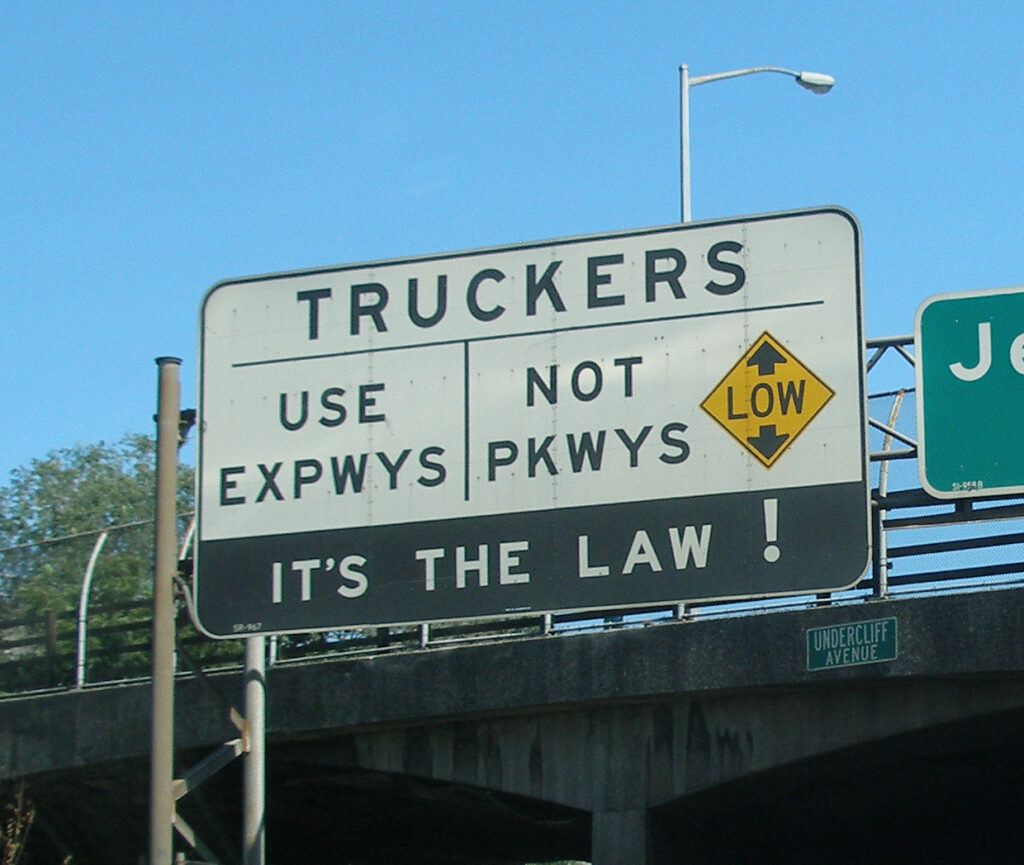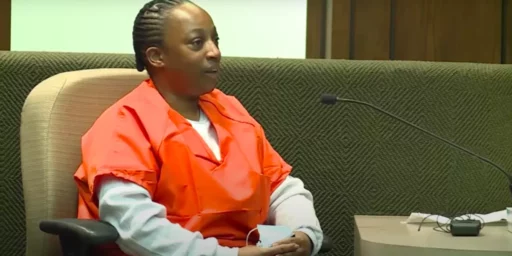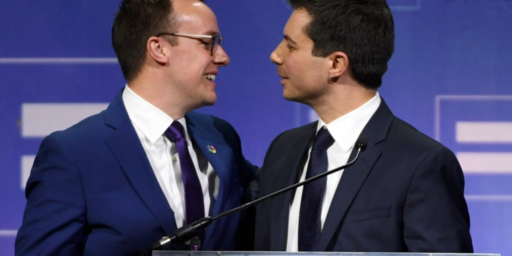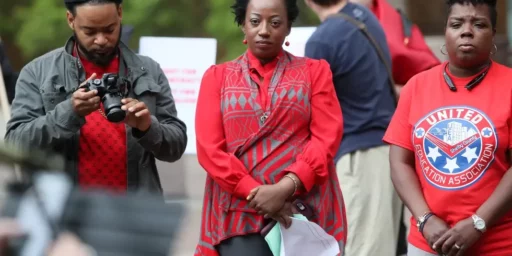Robert Moses Bridge Story Debunked
A favorite anecdote from Robert Caro's first masterpiece is likely untrue.

WaPo fact-checker Glenn Kessler looks into “Robert Moses and the saga of the racist parkway bridges,” the basis for a controversial anecdote shared by Transportation Secretary Pete Buttigieg, and finds it wanting.
[W]e heard from Peter Shulman, an associate professor of history at Case Western University. He said that this story has been largely debunked. So we decided to look deeper. (Note: there is little dispute over the first part of Buttigieg’s comment regarding the building of highways, which is well-documented across the country.)
[…]
“Shapiro” was Sidney M. Shapiro, a close Moses associate and former chief engineer and general manager of the Long Island State Park Commission. He was a major source for Caro. The source notes say that Shapiro granted 100 hours of interviews with Caro, with the understanding that nothing could be used unless he died — and he passed away in 1972, two years before publication.
In the endnotes, Shapiro is listed as the only source for the order to keep the bridges of the parkways low. Shapiro, along with Paul Kern, a law secretary at City Hall under Mayor Fiorella LaGuardia, are listed as sources for Moses believing Black Americans were “dirty.” Kern and Paul Windels, LaGuardia’s corporation counsel, are the sources for the details on the bus permits and pool temperature.
[…]
Bernward Joerges, a German professor of sociology, in 1999 carefully examined the saga of the bridges. In an essay, he acknowledged Moses was an “undemocratic scoundrel” and a “structural racist” but argues that all parkways at the time had low bridges.
“How, then, should one understand that Moses built some 200 overpasses so low?” he asked. “U.S. civil engineers with whom I have corresponded regularly produce two simple explanations for the rationality of the low-hanging bridges: that commercial traffic was excluded from the parkways anyway; and that the generally good transport situation on Long Island forbade the very considerable cost of raising the bridges … Moses did nothing different on Long Island from any parks commissioner in the country. … In sum: Moses could hardly have let buses on his parkways, even if he had wanted differently.”
He also believes Caro overstated the reasons Black Americans did not go to Jones Beach.
“The fact remains that Blacks could gain physical access to Long Island beaches via many routes. And yet Jones Beach remained a white strand,” he observed. “Even today, when many more Blacks drive cars, and when no politician tries to exclude them from the beaches, not many poor Blacks seem to gather on Jones Beach. There existed then, and there exist today, many reasons for Black families to go elsewhere.”
Kenneth T. Jackson, a Columbia University historian who has said that generations of his students have failed to confirm episodes in Caro’s book, also says the overpass story is not true.
“Caro is wrong,” he wrote in an email. “Arnold Vollmer, the landscape architect who was in charge of design for the bridges, said the height was due to cost.” He added: “Also, you can still get to Jones Beach by train and bus, as you always could.
There is, however, at least one dissenter.
But more recently, Thomas J. Campanella, a Cornell University historian of city planning, had a change of heart when he measured the height of the bridges on the Southern State Parkway. “I’ve always had doubts about the veracity of the Jim Crow bridge story. There is little question that Moses held patently bigoted views,” he wrote in an article for Bloomberg News in 2017. But then he recorded clearances for 20 bridges, viaducts and overpasses on other parkways built at the time and compared them to measures of the 20 original bridges and overpasses on the Southern State Parkway. It turned out clearances are substantially lower on the Moses parkway.
“The verdict? It appears that Sid Shapiro was right,” he wrote.
“I do believe it is true,” Campanella said in an email to The Fact Checker. “The parkways I looked at were built in roughly the same era as the Southern State — especially Sawmill and Hutch. In fact, the Westchester parkways set most of the standards for parkway design for years in the United States. The lower overpasses on the Southern State parkway are a substantial deviation from precedent.”
Joerges suggested there was a reason for this. “True the bridges were low, but each had to be low differently,” he wrote. “Moses took great care that each and every bridge was individually fitted into its natural context: standardized unicity, as it were, was part of an artfully laid out nature. One can show more generally that, when it came to parkway building, bridge-building culture was connected to a specific politics of nature.”
Shulman, the professor who brought this debate to our attention, said Campanella’s measurements do not confirm the story. “I don’t know what average bus heights were in the 1920s, but today they appear to be about 118″ (9- 10″), so I’m not sure how meaningful these different heights even would be in practice,” he said in an email. “Vehicles have to have a clearance of less than 7- 10″ to travel on NY parkways at all. The Saw Mill, the one with the greatest height cited by Campanella, is over 10- (123.2″), but the safe clearance is obviously lower, and surely lower than 118″.”
Kessler ultimately demurs:
Obviously this cannot be easily resolved. Caro quotes one of Moses’s top aides as saying the height of the bridges was done for racist reasons, but increasingly that story has been questioned as not credible. Buttigieg should tailor his remarks to reflect what is historically unimpeachable — and we should be more careful to double-check on the latest views of historians. Even a Pulitzer Prize-winning book is not always the last word on a subject.
So, two things here.
First, Buttigieg did nothing wrong here. He relied on a powerful anecdote from what’s considered one of the greatest biographies ever written to illustrate his point. Going forward, he should obviously choose a different example.
Second, whether this anecdote is true is relevant only to our understanding of Moses, not the larger point Buttigieg was seeking to illustrate. As Joerges suggests, worse outcomes for Black Americans are often overdetermined. Aside from the direct legacy of slavery, we had generations of racist politicians and other decisionmakers seeking to keep them separate and low. And, even once that started to change, Blacks were less represented at the table and this was exacerbated by a tendency to be poorer, less educated, and all manner of other obstacles.






As I said yesterday, why do we take the word of Glenn Kessler, who has managed to cherry-pick a handful of rando academics, over that of Robert Caro, who actually interviewed people involved in Moses’ decision-making process?
Heck, look at the weaselly way Kessler finishes: “Caro quotes one of Moses’ top aides as saying the height of the bridges was done for racist reasons, but increasingly that story has been questioned.”
You might as well say “The founding documents of the Confederacy say they were seceding from the union to defend slavery, but increasingly that story has been questioned by some who claim the war was over states’ rights.”
On the one hand you have direct quotes from someone who was there. On the other hand, you have “questions.”
To me, the story is not “debunked.”
@wr: So, Caro is a great storyteller and a meticulous researcher. But he’s taking the word of an old man who may simply have an agenda with regard to Moses. The scholars in question are simply trying to investigate the story. If parkways at the time were all super low, even outside NYC, it’s reasonable to assume that this was not a result of Moses’ dastardly plans.
I will repost what I shared in the other thread last night:
I had avoided weighing in on the historical accuracy of the claim because it’s complex (and, lets face it, folks get pretty antsy over anything seen as “too academic” here).
Background on why I’m weighing in: When I was working on my PhD at Cornell, it was partially in the field of Science and Technology Studies, where this has been an ongoing debate (all of the major current players are STS Historians and Sociologists). So I’m familiar with the arguments for and against.
My take (though I’m slightly removed from the literature) is that Peter Shulman is overplaying things a bit when he says it’s “largely debunked.” There’s still a lot of back and forth in the literature over Joerges’ article and argument (itself a response to one by Bruno Latour).
Additionally, there is also overwhelming evidence that many other of Robert Moses’ decisions were, at best, influenced by not caring about their impact on BIPOC and poor communities or were, at worst, fueled by animus.
As with most historical accounts, what we end up with is one that is contested and the version most people choose to tell tends to align with their priors.
So…a history professor can’t do the die diligence to do ND out the average height of a bus in the 1920’s, but instead assumes they follow a modern pattern to claim a debunk? Seems legit.
@James Joyner: “The scholars in question are simply trying to investigate the story.”
And you know their motivations… how?
Also, concentrating on the specifics of this one account tends to miss the forest for a tree.
Here is a rundown (from the last time, in April Pete B. brought up this topic) of the impact of past projects on BIPOC communities in NYC:
https://champ.gothamist.com/champ/gothamist/news/buttigieg-observed-some-highways-have-racist-past-heres-what-meant-nyc
And this City Lab article by Campanella gets into the topic as well (while trading out a bit more complexity and nuance as you would expect from a scholar):
https://www.bloomberg.com/news/articles/2017-07-09/robert-moses-and-his-racist-parkway-explained
This is the problem with using specific anecdotes to illustrate broader points. While the anecdote of one particular issue is easiest for people to grasp, we end up with “well, one side says…the other side says…” debates, which are mostly beside the point.
The big problem–the one that needs to be addressed and fixed–is that across the country, in cities and towns, transportation infrastructure has had a profoundly negative impact on minority communities, mostly Black people.
– Highways, roadways, and overpasses were built to the path of least resistance–meaning, they cut through the communities that had the least power, lowest voices, etc.
– That meant largely urban Black communities.
– This has led to a whole host of problems: pollution is more concentrated, health effects are greater, and the economic value of these areas was absolutely devastated, destroying any chance to build wealth through home ownership.
– Other infrastructure issues continue to be similarly lop-sided in their effects. Flint’s water. Bus routes. Etcetera.
There is no question that racism played a role in building the interstate highway system. As far as I’m concerned it doesn’t really make a damn bit of difference if it was straight-up racist motivations or the squishier “eminent domain will be easier in communities with less political clout”-type racism.
These types of debates over specific instances detract from the broader issue and Democrats need to start making that clear.
@wr:
They’re scholars publishing peer-reviewed research. Kenneth Jackson in particular is one of the most-respected historians of his generation. I’ll take their research over an anecdote.
@Matt Bernius:
Sure. That’s the conclusion of the OP.
@Jen:
This. Concentrating on poverty, in this case, is a bit like making the traditional “states rights” argument about the Civil War. We have to look at, when there were multiple low income communities to take from the characteristics of the ones that were ultimately chosen to run infrastructure through. And what is seen is a pattern of selecting BIPOC communities.
And this is still continuing to this day.
What hasn’t been debunked is the Republican politician can conjure the most specious bogeyman from their twisted, racist imagination and shriek foul play. And when the Democratic politician responds they will have provide “historically unimpeachable” anecdotes and carefully avoid a lecturing tone… or the GOP will win.
Same as it ever was.
Yesterday our friend HLaw92 was writing about the near-NYC subdivision in which he lived (Westchester?) and how any change that would diminish the value of property was going to gain ferocious opposition but that the race of buyers does not.
Preserving the market value of urban land is also (of course) on the minds of urban planners. How much it costs to clear a right-of-way and build infrastructure on it depends on who is sitting on that land at the beginning of the process. It is completely UNshocking that poor and minority people are at the bottom of the stack when city ‘improvements’ are planned.
It’s also a fault of our larger society. Should be corrected. But not hard to understand.
@JohnMcC: It was a constant source of surprise to me when I lived in Pasadena that CalTrans, following a decades-old plan, yearned to run a freeway extension through one of the oldest and most beautiful parts of the city. They bought century-old mansions and left them vacant for years, hoping they would decay enough that the city would clamor to have them buried under concrete. Finally the forces of preservation prevailed — but yeah, because a lot of well-to-do people fought them to the death.
I always kind of admired their willingness to avoid the easy path of bulldozing the poor areas to the east… while still opposing the project completely.
@Scott F.:
I look at it in military terms. They are defending what is, we are pushing for what should be.
The advantage is almost always to the defense because they’ve had time to build walls and generally have the advantage of interior lines. The attackers (that’d be us), need to have a very significant advantage in numbers or weapons systems. We generally don’t have that sort of overwhelming advantage, we have at best, just enough power to keep the other side contained. Contained, not wiped out. They sally out, we smack them back, but once behind their walls, they are safe until we either gain a very significant advantage, or the long siege wears them out and they start losing numbers to desertion or run out of resources.
The reason I am so often annoyed by progressives is that they don’t understand power. They understand righteousness and outrage, but after a million memes and hashtags and clever comedy bits all attacking Joe Manchin, what’s the net effect? Fuck all. Manchin has power, AOC does not, and all the cute Twitter clapbacks and angry demonstrators in kayaks don’t change that. Winning in politics, like winning in war, demands that you accurately assess the power dynamics. What we have right now is just enough power to maybe make incremental progress. If we’re smart and lucky. If we’re not, we’ll have no power.
@Michael Reynolds: “I look at it in military terms. They are defending what is, we are pushing for what should be.”
First time I’ve understood your approach to these things. Good explanation.
With race in America from the ground level up everything makes no sense to white people. The identity of being white in this country deals with not having to understand how race plays out. We get how rich people look down on those beneath them. Rich people get that. Race just doesn’t work that way.
For example, there was a study showing that contract buying in Chicago in the 50s and 60s cost black families around 3-4 billion dollars in lost wealth. Try finding a narrative thread in the humans who did the dirty work in taking this money. WASPs have a good idea of how they tried to exclude non-WASPs from the establishment until the 50s or so. But white people in Chicago will probably never understand how they screwed black people. A white guy in Chicago whose dad worked at a bank that was doing this to black people has no idea his dad was doing this. They will go to their graves thinking they earned their positions and somehow black people didn’t.
@wr:
Playing defense is easy because it’s reactive. The attacker picks a spot to attack, you move forces there to counter. As you feel in mortal peril, your discipline tends to be tighter, your focus clearer.
The attacker has the problem of choice, of picking the where and when and how. Absent very strong leadership the attackers will not be united because they have more freedom of action, more autonomy. The attackers can more easily choose to wander away.
Conservatives insist they are the ones being attacked. They feel it. Their media feeds that paranoia. So they act like besieged defenders and that gives them an advantage.
On our side we don’t think we’re attacking, we’re just explaining or educating or lecturing. Yet, we are the attackers, the agents of change in the status quo, but because we wander all over the battlefield taking random potshots that are emotionally satisfying but have no effect, we fail.
I fear this feeds my impression of Kessler’s fact checking. OK, Pete B relied on the generally accepted primary source on this subject, but he should have dug deeper and found that there is some obscure academic controversy (about what isn’t there) and shouldn’t have said this. And I expect Buttigieg won’t say it again. A GOP can say we spend 20% of the budget on foreign aid and Kessler will say it’s really less than 1%, but we do spend money on foreign aid, so one Pinocchio. And the GOP will keep saying it.
The use of the word debunked is incorrect here, but questions of the veracity of the story have arisen. I’m curious as what the explanation is of the difference of bridge height in two parkways built in New Jersey at the same time.
@Michael Reynolds:
This is fairly apt analogy for the politics here and it’s explains to me why you believe the progressives are going about the power dynamics all wrong. But, I’m finding the analogy unhelpful for formulating the right response in these cases. I’m pretty sure that in a castle siege, the winning move is not withdrawing or, even worse, sitting prone within range while Private Cruz and Private Huckabee take clear shots at you from the ramparts.
@Scott F.:
The left could formulate a good start by spending a great deal less time focused on historical wrongs & assigning blame for them, and a great deal more time focused on formulating actionable policy to fix the consequences of those historical wrongs here in the present. Just a suggestion.
In other words – nobody outside of the pedantic and the virtue signalers cares why some guy did what he did nearly a hundred years ago, and focusing on that is a losing position. A winning position looks more like 1) Are the consequences of those actions still relevant here in the present in terms of ongoing effects caused by them, and if so, 2) what do you propose to do about them? If they’re not relevant here in the present , see the first sentence and move on.
@HarvardLaw92:
You mean actionable policy like passing a big infrastructure bill, like the Democrats just did? And then promoting to a key constituency the mitigation in these past wrongs that are coming in the present from said infrastructure bill, which is all that Buttigieg was doing?
But, most importantly it seems, then The Left needs to just sit there and take the hits being fired from Bullshit Castle, because… why again? As Michael notes, the left is the attacking force. We needn’t fear so much the flailing whining coming from the likes of Cruz and Huckabee.
@HarvardLaw92: “In other words – nobody outside of the pedantic and the virtue signalers cares why some guy did what he did nearly a hundred years ago, and focusing on that is a losing position”
Yes, because as Santayana said, those who forget history are going to sail to victory every time and nothing could possibly go wrong. Or something like that.
@Scott F.:
That wasn’t an infrastructure bill, sorry. Infrastructure bills build and repair infrastructure, like roads and bridges and dams. That was a human services bill with a disingenuous title.
@wr:
Rather depends on whether you want to lecture people about history or you actually want to get something done.